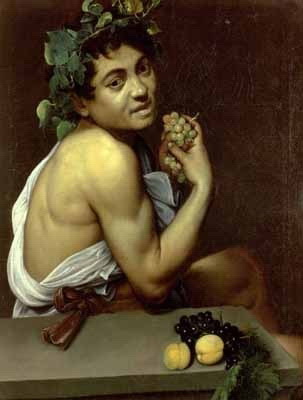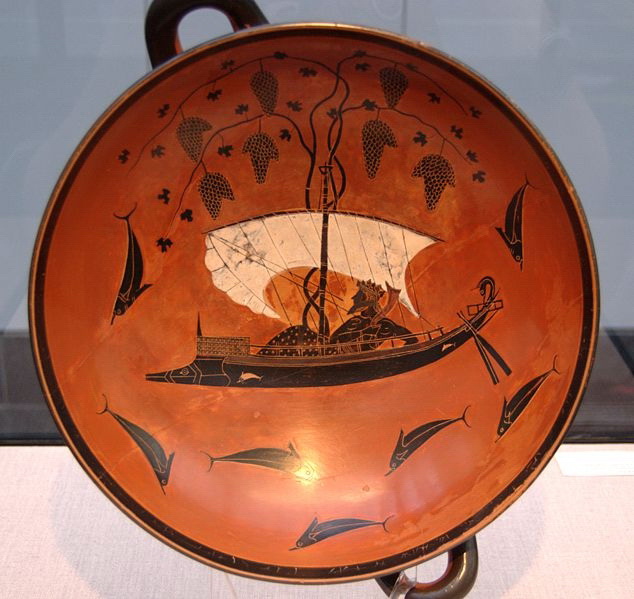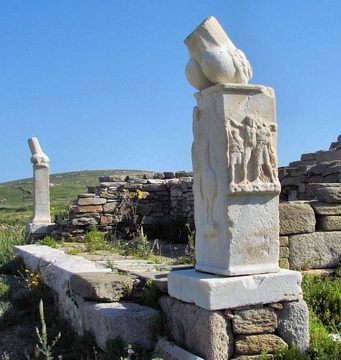In
classical mythology, Dionysus or Dionysos (in Greek,
Διόνυσος or
Διώνυσος; associated with Roman Liber),
is the god of wine, the inspirer of ritual madness and ecstasy, and a major
figure of Greek mythology. The geographical origins of his cult were unknown,
but almost all myths depicted him as having “foreign” (i.e. non-Greek)
origins.
He was also known as Bacchus and the frenzy he induces, bakcheia. He is the patron deity of agriculture and the theatre. He was also known as the Liberator (Eleutherios), freeing one from one’s normal self, by madness, ecstasy, or wine. The divine mission of Dionysus was to mingle the music of the aulos and to bring an end to care and worry. Scholars have discussed Dionysus’ relationship to the “cult of the souls” and his ability to preside over communication between the living and the dead.
In
Greek mythology Dionysus is made to be a son of Zeus and Semele; other versions
of the myth contend that he is a son of Zeus and Persephone. He is described as
being womanly or “man-womanish”.
The
name Dionysos is of uncertain significance; its -nysos element may well be
non-Greek in origin, but its dio- element has been associated since antiquity
with Zeus (genitive Dios). Nysa, for Greek writers, is either the nymph who
nursed him, or the mountain where he was attended by several nymphs (the Nysiads),
who fed him and made him immortal as directed by Hermes.
The
retinue of Dionysus was called the Thiasus and comprised chiefly Maenads.

The
Sick
Bacchus, by Michelangelo Merisi da Caravaggio, 1591
Dionysus
is a god of mystery religious rites, such as those practiced in honor of
Demeter and Persephone at Eleusis near Athens. In the Thracian mysteries, he
wears the “bassaris” or fox-skin, symbolizing new life. His own rites,
the Dionysian Mysteries, were the most secretive of all. Many scholars
believe that Dionysus is a syncretism of a local Greek nature deity and a
more powerful god from Thrace or Phrygia such as Sabazios.
The
bull, the serpent, the ivy and the wine are the signs of the characteristic
Dionysian atmosphere, and Dionysus is strongly associated with satyrs,
centaurs, and sileni. He is often shown riding a leopard, wearing a leopard
skin, or in a chariot drawn by panthers, and may also be recognized by the
thyrsus he carries. Besides the grapevine and its wild barren alter ego, the
toxic ivy plant, both sacred to him, the fig was also his symbol. The
pinecone that tipped his thyrsus linked him to Cybele, and the pomegranate
linked him to Demeter. The Dionysia and Lenaia festivals in Athens were
dedicated to Dionysus. Initiates worshipped him in the Dionysian Mysteries,
which were comparable to and linked with the Orphic Mysteries, and may have
influenced Gnosticism. Orpheus was said to have invented the Mysteries of
Dionysus.

